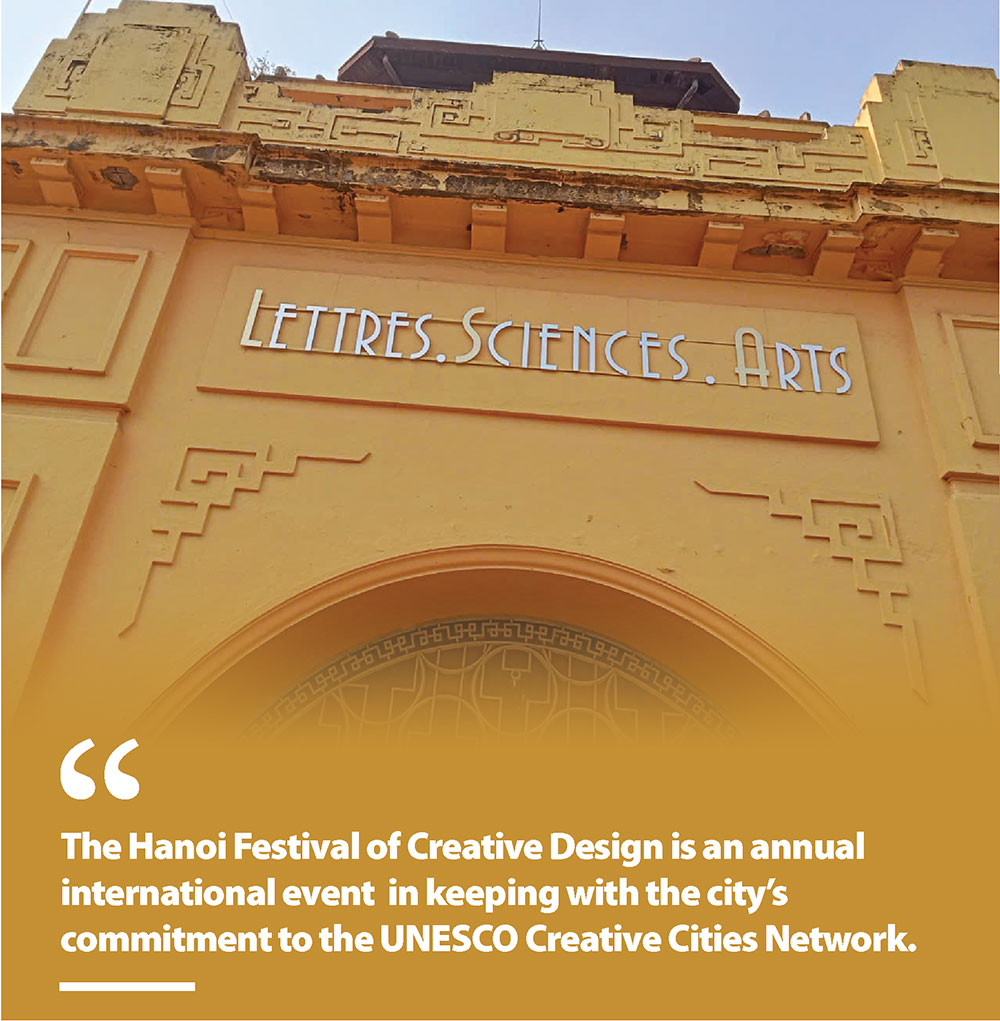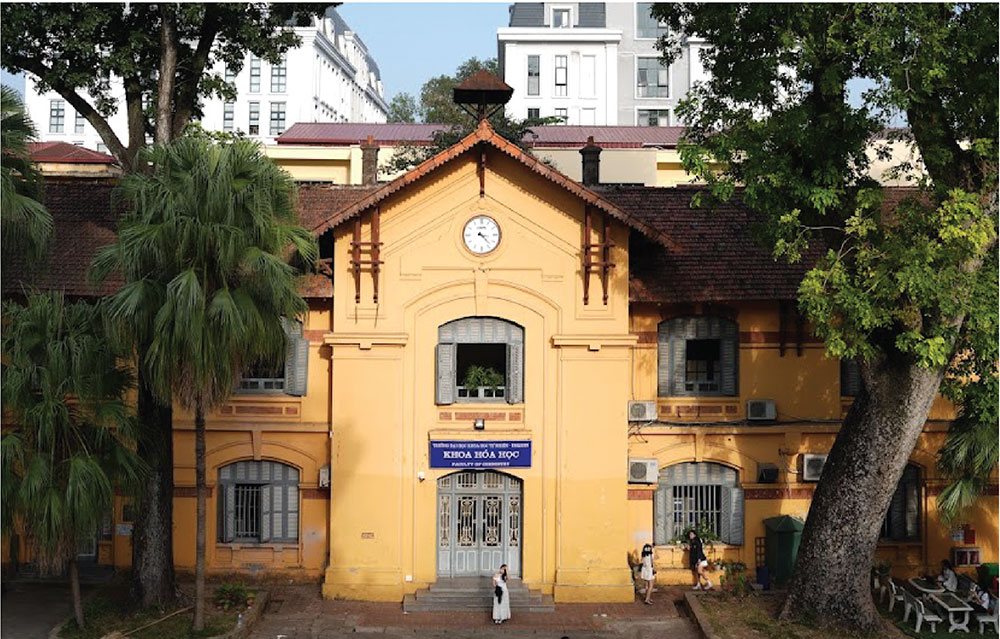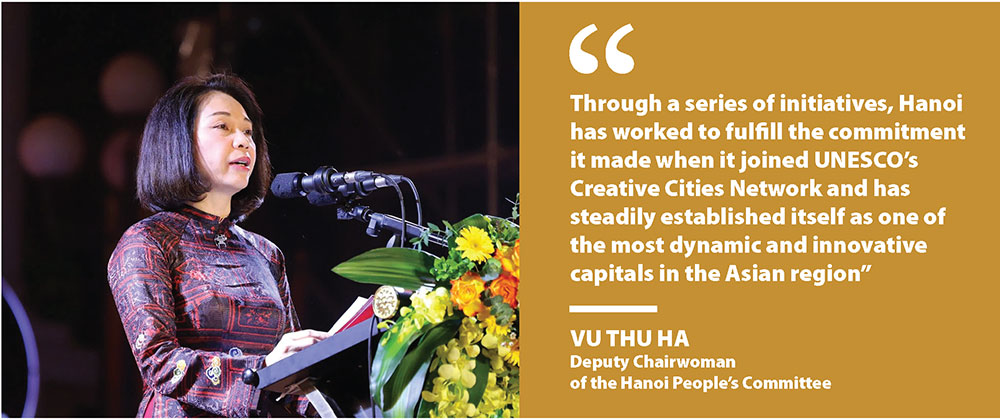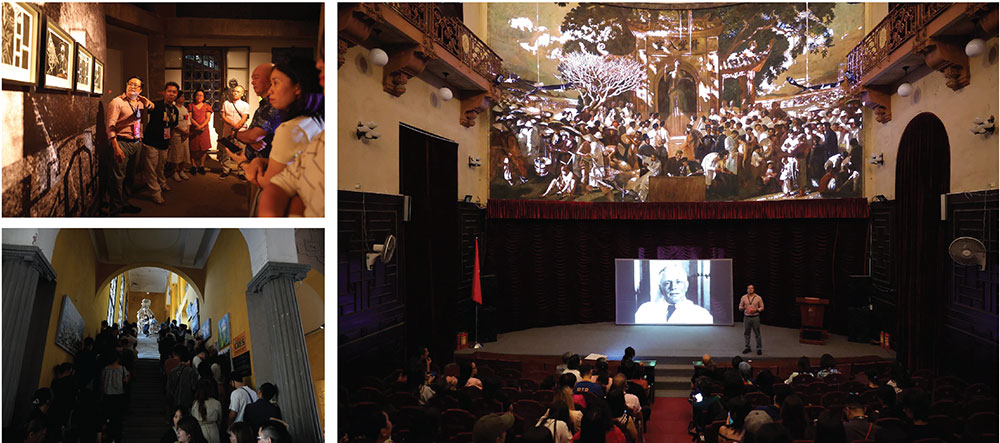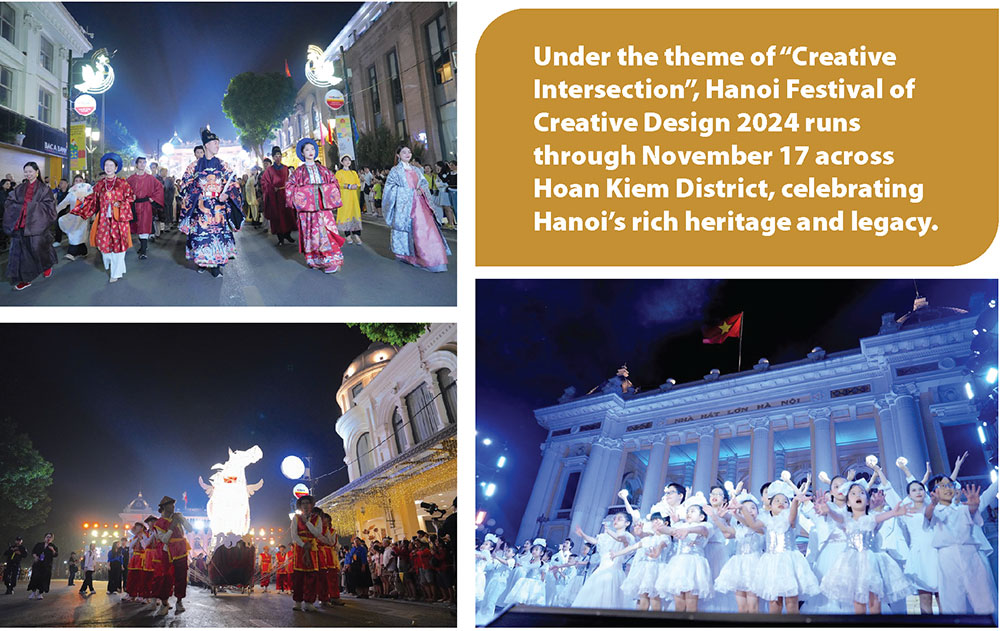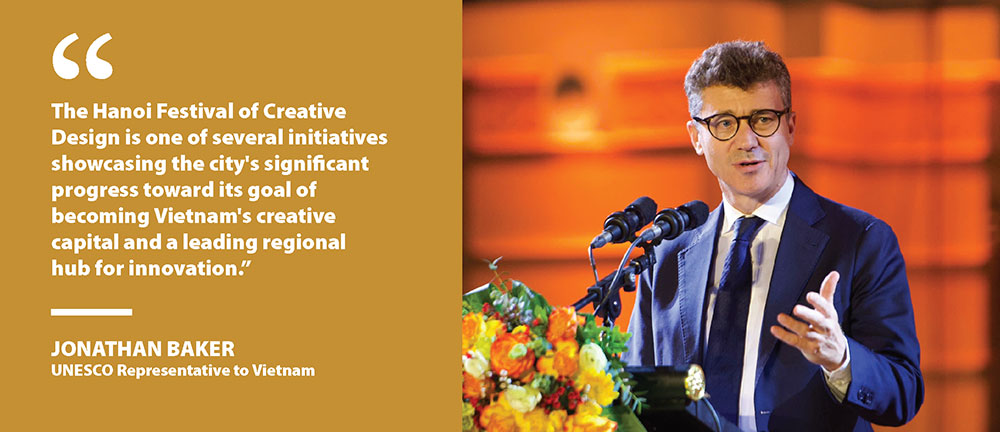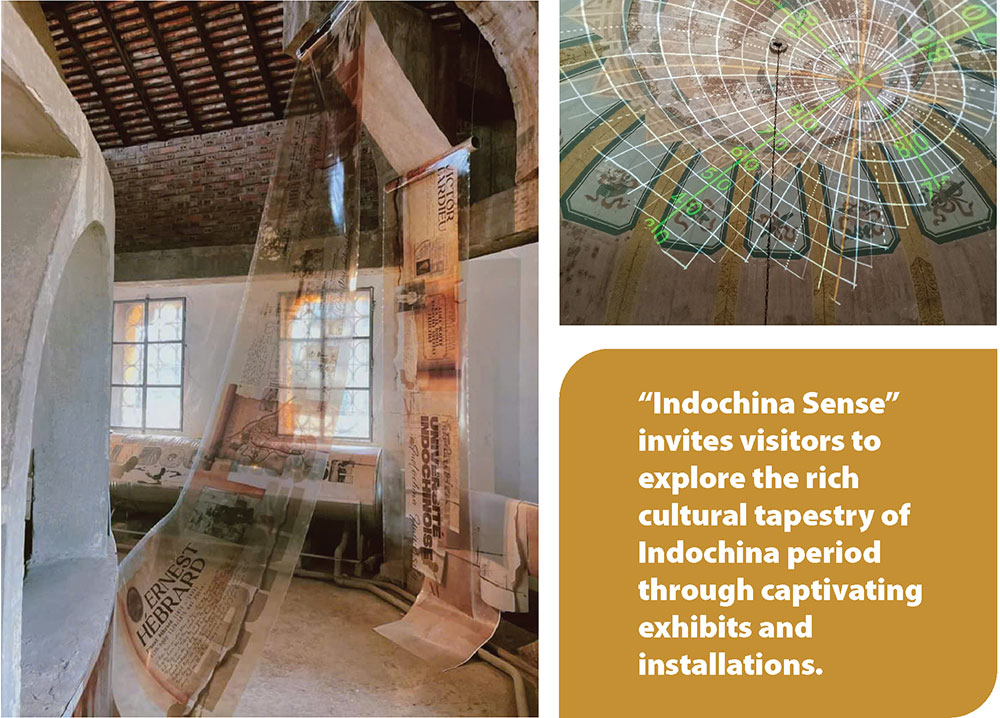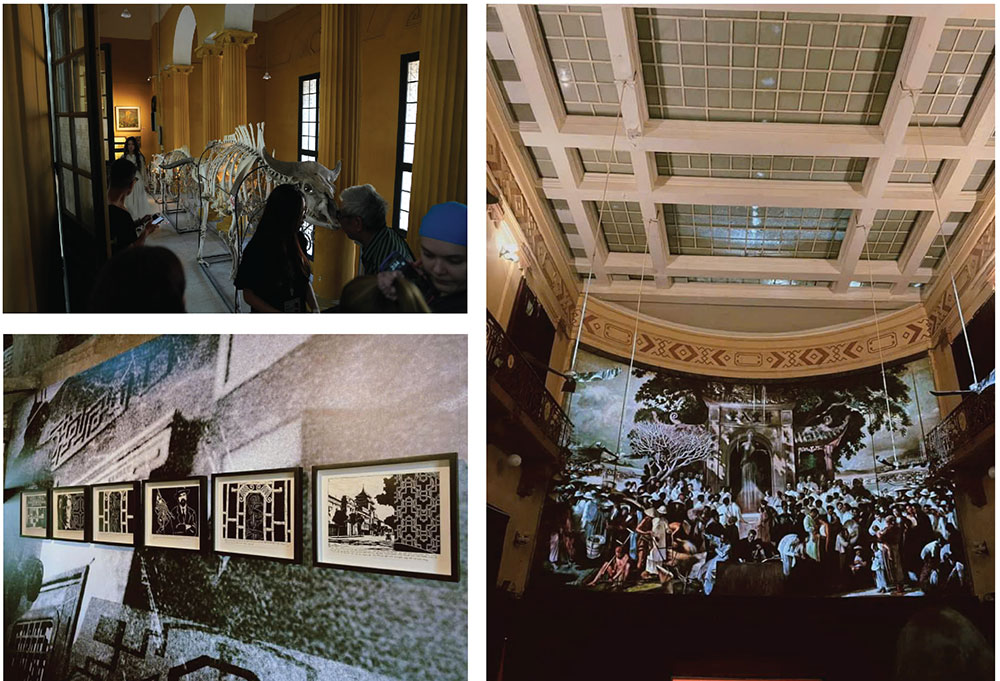

According to Nguyen The Son, curator of Indochina Senses, the grand exhibition features 22 artworks and interactive installations, evoking nostalgia for Indochinese architecture and fine arts.
The concept of 'liberal education' - the celebration of learning - and this iconic Indochinese building served as the inspiration for this exhibition,” he told the Hanoi Times.“The exhibition offers viewers a deeper understanding of cultural values through the enduring essence of Indochinese architecture. It’s a rare opportunity to access this historical relic, allowing Hanoians to relive the city’s history, layer by layer,” he said.
"Through this exhibition, we hope to encourage young people to explore the roots of knowledge and foster a greater appreciation and love for the invaluable heritage of our capital," he added.As the first public university in Indochina with a Western educational model, its mission was to “disseminate European sciences and methods throughout Indochina, using the French language as a medium.”
After a 10-year hiatus, the Indochina University was reopened from 1922 to 1944, training thousands of Vietnamese intellectuals in various fields such as law, commerce, medicine, agriculture, pedagogy, and literature, among others. In its last academic year in 1945, before the French government in Vietnam was overthrown by Japan, the university had 1,575 students, the majority of whom were Vietnamese.Through many historical changes, the ancient school has stood the test of time and continues to train many generations of young intellectuals in Hanoi.
Many prominent revolutionaries studied at Indochina University, including Truong Chinh, General Secretary of the Vietnam Workers’ Party (Faculty of Commerce), and General Vo Nguyen Giap, Commander-in-Chief of the Vietnam People's Army (Faculty of Law).
The university’s students were actively involved in patriotic and revolutionary movements, and many of them went on to become influential leaders and intellectuals, such as Nguyen An Ninh, Nguyen Thai Hoc, Pho Duc Chinh, Dang Thai Mai, Nguyen Dinh Thi, and Cu Huy Can.Curator Nguyen The Son explained that the artists were able to create stunning artworks at the “Indochina Sense” exhibition in a short period, thanks to the rich inspiration drawn from the university’s heritage.
As a “monument” to culture, academia, and art, this legendary university embodies all the elements that inspired the artists, alongside its unique Indochinese architecture,” he said.Most of the works and installations at the exhibition were created in just one month. The artists worked in groups, developing ideas based on the principle of “interaction with the terrain.”
The artists’ goal was to combine the novelty of contemporary art - incorporating modern lighting and 3D mapping projection techniques- with the ancient architecture and historic space of Indochina University to evoke unique emotions in the audience.Tran Hau Yen The’s light installation made a striking impression as visitors entered the building’s main hall. The arched entrance, adorned with colorful cut-and-pasted cellophane on glass panels, reflected the building’s ancient space and evoked the nostalgic hues of old Hanoi.
Upon entering the Nguy Nhu Kon Tum Lecture Hall, visitors can admire Thang Duong Nhap That, a famous mural painted by Victor Tardieu in 1924. Light projection allows the audience to explore the painting in a dynamic way, revealing hidden layers of color.As the light shifts, characters representing the social classes of the Indochina period gradually emerge, offering a fascinating glimpse into history.
In keeping with the the exhibition’s nostalgic theme, the “Flow of Origins” installation seamlessly blends with both the architecture and the artwork.
Inspired by the soft hues of Indochinese silk paintings, artist Le Phuoc Anh created layered silk panels that resemble flower petals when viewed from below. The light filtering through the silk layers from the chandelier creates a serene, harmonious atmosphere, offering a delicate contrast to the grand hall’s historic setting.
While the second floor features specimens of Indochinese, visitors are invited to explore the building’s elevated architecture on the third floor. This floor is home to artist Tran Hau Yen The’s “Sources of Cultural Heritage” made of interactive light-transmitting acrylic.The acrylic stone tablet features an embossed phoenix, inspired by East Asian motifs and the decorative designs of architect Ernest Hébrard, who designed the Indochina University building. Hébrard drew from the Temple of Literature to incorporate the phoenix into the building’s design, especially its dome. Through this work, the artist celebrates the fusion of European architecture with Vietnamese traditions, emphasizing the enduring connection between past cultural legacies.
On the fourth-floor balcony, Le Dang Ninh’s installation Specimen features acrylic paintings inspired by the glass bottle designs in the Biological Museum on the second floor. These artworks interact beautifully with the wrought iron floral patterns on the attic railings, creating a seamless dialogue between past and present.
The Biological Museum, the first natural history museum in Indochina, founded in 1926, serves as a key inspiration for this installation. The harmonious integration of these display elements with the building’s historical design makes the “Flow of Origins” collection an integral part of the architecture and landscape, evoking the core fields of study of the former Indochina University: Letters, Science, and the Arts.
The exciting tour to explore the heritage and art architecture “Indochina Senses” left a deep impression on locals and visitors to Hanoi. Patrick Noland, a visitor from Australia, told the Hanoi Times that he was really impressed by the exhibition, and overwhelmed by the Indochinese architecture of the relic. “The artists use many modern installation technologies to ‘tell’ the beauty of the past, helping the public to feel multi-dimensional and multi-sensory about the art and architecture of Indochina,” he said.





- Thousands flock to Van Mieu for calligraphy tradition
- New treasures unveiled from Thang Long Imperial Citadel
- Fire from the earth: A musical homage to Hanoi's revolutionary history
- Behold the unique collection of snake lacquer statues
- Young voices celebrate and preserve Hanoi’s cultural heritage
- A glimpse of the 24K gold Lunar New Year 2025 Snake Mascot

